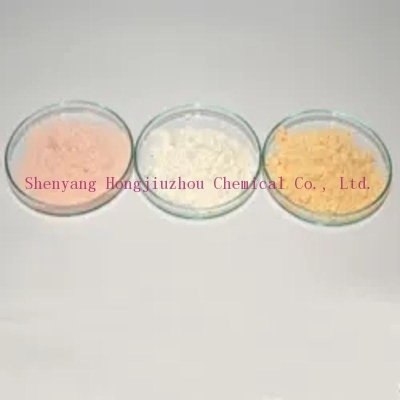-
Categories
-
Pharmaceutical Intermediates
-
Active Pharmaceutical Ingredients
-
Food Additives
- Industrial Coatings
- Agrochemicals
- Dyes and Pigments
- Surfactant
- Flavors and Fragrances
- Chemical Reagents
- Catalyst and Auxiliary
- Natural Products
- Inorganic Chemistry
-
Organic Chemistry
-
Biochemical Engineering
- Analytical Chemistry
- Cosmetic Ingredient
-
Pharmaceutical Intermediates
Promotion
ECHEMI Mall
Wholesale
Weekly Price
Exhibition
News
-
Trade Service
1.
Polyether polyurethane has good low temperature flexibility and good water resistance, and the price of commonly used polyoxypropylene glycol (PPG) is lower than polyester glycol.
Polyester polyurethane has high strength and good adhesion, but because polyester itself is less resistant to hydrolysis than polyether, polyester waterborne polyurethane made from general raw materials has a shorter storage stability period
2.
Polymethylene polyphenyl polyisocyanates are generally used to prepare vinyl polyurethane emulsions and isocyanate emulsions
3.
4.
5.
(1) Carboxylic acid chain extender dimethylolpropionic acid is abbreviated as DMPA, its full name is 2,2-dimethylolpropionic acid, also known as α,α-bismethylolpropionic acid, which is commonly used in polyurethane emulsions at home and abroad A kind of hydrophilic chain extender, as early as the 1960s and 1970s in Germany, the United States and other countries used to prepare polyurethane emulsions
Dihydroxy half ester half ester is the product of the reaction of alcohol and dibasic acid anhydride.
Generally, the molar ratio of alcohol to acid anhydride is 1:1.
One carboxyl group of the acid anhydride is esterified while the other carboxyl group is retained
.
In the preparation of half-ester chain extenders for polyurethane emulsions, the alcohol compounds used are generally small molecular triols or oligomer triols, such as glycerol and low molecular weight polyether triols
.
In this way, a carboxyl-containing dihydroxy compound can be generated
.
The molecular weight of triol is generally between about 100 and 2000
.
Anhydrides useful in preparing the half esters are maleic anhydride (maleic anhydride), phthalic anhydride (phthalic anhydride), succinic anhydride, glutaric anhydride
.
Semi-ester generally needs to be made by yourself
.
Carboxylic acid chain extenders also include amino acids such as H2N (CH2)4 CH (COOH) NH2, diaminobenzoic acid and so on
.
(2) Sulfonate type chain extender sodium ethylenediaminoethanesulfonate, sodium 1,4-butanediol-2-sulfonate and its derivatives can be used as chain extenders for sulfonic acid type waterborne polyurethane
.
Sodium 1,4-butanediol-2-sulfonate is obtained by the addition of 2-ene-1,4-butanediol and sodium bisulfite.
Similarly, the oxidation of 2-ene-1,4-butanediol The adduct of ethylene or propylene oxide polycondensate and sodium bisulfite can also be used as a chain extender
.
(3) Cationic chain extender.
The dihydroxy compound containing tertiary amine group is a kind of commonly used cationic polyurethane emulsion chain extender.
Through quaternization reaction or neutralization with acid, the tertiary amine group in the chain segment generates quaternary ammonium.
Ion, has a hydrophilic effect
.
Among them, N-methyldiethanolamine is the most commonly used
.
The reaction product of diethylenetriamine and epichlorohydrin is also a special cationic chain extender:
6.
Salt-forming agent Broadly speaking, any compound that can form an ionic group can be called a salt-forming agent
.
A salt-forming agent is a reagent that can react with carboxyl groups, sulfonic acid groups, tertiary amine groups or urea groups to form polymer salts or ionic groups
.
Common salt-forming agents for anionic polyurethane emulsions are sodium hydroxide, ammonia, and triethylamine
.
The salt-forming agents of cationic polyurethane emulsions include acids such as HCI, CH3COOH, and alkylating agents such as CH3I, (CH3)2SO4, and epichlorohydrin
.
When urea groups react with cyclic lactones, sultones, and acid anhydrides under alkaline conditions, sulfonate groups or carboxyl groups can be attached to the polyurethane chain
.
Polyurethanes with ionic groups can also be prepared by sulfomethylation or aminomethylation
.
7.
Solvent In the preparation of polyurethane emulsions, sometimes the viscosity of the prepolymer is so high that it is difficult to stir
.
The emulsification of the prepolymer in water requires vigorous stirring.
The low viscosity is good for rapid stirring .
Although increasing the temperature of the prepolymer can reduce the viscosity, the high temperature of the prepolymer during emulsification is not conducive to obtaining a stable fine particle size emulsion
.
Therefore, in order to reduce the viscosity and facilitate the dispersion of the prepolymer, an appropriate amount of organic solvent can be added
.
Solvents that can be used include water-soluble (hydrophilic) organic solvents such as acetone, methyl ethyl ketone, dioxane, N,N-dimethylformamide, and N-methylpyrrolidone, and hydrophobic solvents such as toluene
.
Considering factors such as cost and operability, acetone and methyl ethyl ketone are the most commonly used
.
Generally speaking, after preparing a stable emulsion, the low and medium boiling point solvents can also be removed from the emulsion by vacuum distillation to reduce the odor of water-based polyurethane, and the residual amount of solvent can be very small.
There is almost no smell of organic solvents
.
If the amount of solvent is small, it does not need to be removed
.
When water-based polyurethane is drying, the volatilization of a small amount of residual low-boiling solvent can speed up the drying time of the film, and the presence of a small amount of high-boiling solvent can make the film smooth, which is more commonly used in the coating industry
.
8.
Emulsifiers Some polyurethane emulsions are prepared by external emulsification, using emulsifiers and high shear to disperse the polyurethane or prepolymer solution in water
.
The emulsifiers used in the preparation of polyurethane emulsions include non-ionic emulsifiers and cationic and anionic emulsifiers, while non-ionic surfactants are mainly used, such as ethylene oxide-propylene oxide copolymer, bisphenol A-epichlorohydrin - polyoxyethylene glycol adducts
.
Considering the stability and residual influence of emulsifier, the molecular weight of emulsifier is preferably 10,000 to 20,000, and the content of PEO is more than 60%.
The terminal can be a hydroxyl group, which can react with isocyanate groups
.
2.
The preparation methods of waterborne polyurethane are as follows:
1.
The solution method (also known as the acetone method) dissolves the isocyanate-terminated prepolymer in a solvent with a low boiling point that is miscible with water (acetone is the most commonly used, so this method is also called the acetone method), and hydrophilic functional groups The compound reacts to form a polyurethane ionomer, which is mixed with water to achieve phase transfer, and the acetone is recovered by distillation to obtain an aqueous polyurethane emulsion
.
The process is as follows:
This method is currently the most commonly used and most important method, the steps are complex and reproducible
.
Almost all linear polyurethanes can be implanted with ionomers by this method, and then dispersed in the water phase to become an aqueous dispersion
.
The particle size of the dispersion is 0.
03~0.
5μm, and the particle size can be changed in a wide range.
It can be opaque, translucent or milky white thermoplastic polyurethane emulsion
.
2.
Prepolymer dispersion method This process does not require a large amount of solvents, avoiding the trouble of solvent recovery, and also meets the trend of low VOC and no VOC future environmental protection requirements
.
The first step of this process is to first synthesize the terminal-NCO-based prepolymer, and then implant the ion groups to make it an ionic oligomer.
Add water and stir vigorously.
During this process, the polyurethane prepolymer forms an aqueous dispersion and terminal- The chain extension reaction of the NCO group and water occurs simultaneously
.
Adding diamine as chain extender can reduce the probability of -NCO reacting with water, and finally produce polyurethane-urea aqueous dispersion
.
The process is as follows:
This method is simpler than the acetone method, does not require a solvent recovery process, and saves energy, but the product performance is slightly worse than that of the acetone method
.
Usually, the prepolymer is added to water for dispersion under strong stirring.
If the -NCO activity is low or a high-shear mixing and dispersing device is used, it can also be dispersed by reverse feeding, that is, adding water to the prepolymer
.
The particle size of the emulsion prepared by this method is 0.
1~0.
5μm, and polyurethane emulsions with different crosslinking degrees can be prepared
.
3.
The melt dispersion method prepares the prepolymer of polyester or polyether diol, tertiary amine and isocyanate in the molten state, and terminates it with excess urea to generate hydrophilic biuret ionomer, and then put it in formaldehyde Disperse in an aqueous solution to cause a methylolation reaction to generate a methylol biuret polyurethane oligomer, which can be diluted with water to obtain a polyurethane diurea emulsion
.
In fact, under the condition of low pH value, the polycondensation reaction between the dispersed phases achieves the purpose of chain extension and crosslinking
.
The reaction of this method is relatively easy to control, does not require a solvent, and does not require a high-efficiency mixing device.
It can be made into dispersible colloidal particles with a particle size of 0.
03~10μm.
The dispersion is stable and suitable for large-scale industrial production.
Polyurethane emulsion with degree of crosslinking
.
In addition, there are ketimine and ketazine methods for preparing water-based polyurethanes
.
These two methods use ketimine (condensate of ketone and diamine) and ketazine (condensate of ketone and hydrazine) as latent chain extenders.
Under normal conditions, they will not react with isocyanate, and once they are exposed to water After that, the hydrolysis reaction begins.
The hydrolyzed products are diamine and hydrazine, except for ketones.
The hydrolysis rate is much faster than the reaction between isocyanate and water.
The hydrolysis process is shown in the following formula:
In this process, the hydrolysis reaction product diamine and hydrazine act as the dispersing agent of the prepolymer dispersed in the water, and the chain extension reaction and the water dispersion are carried out almost simultaneously, until the phase transfer phenomenon occurs when the water is added
.
This method requires the use of a solvent and a dispersing device, and a dispersion with a particle size of 0.
03 to 1 μm can be prepared
.
The isocyanate-terminated prepolymer is forced to disperse under the action of an emulsifier, using a high-shear stirring device, and at the same time, using a diamine as a chain extender to obtain a polyurethane emulsion
.
In order to reduce the viscosity of the prepolymer, some solvents can be appropriately added.
The particle size of the emulsion obtained by this method is large, about 0.
7~3μm, with poor stability, phase separation and gel formation, poor film formation performance, and film formation needs to be heated to 100 A certain strength can be obtained above ℃
.







